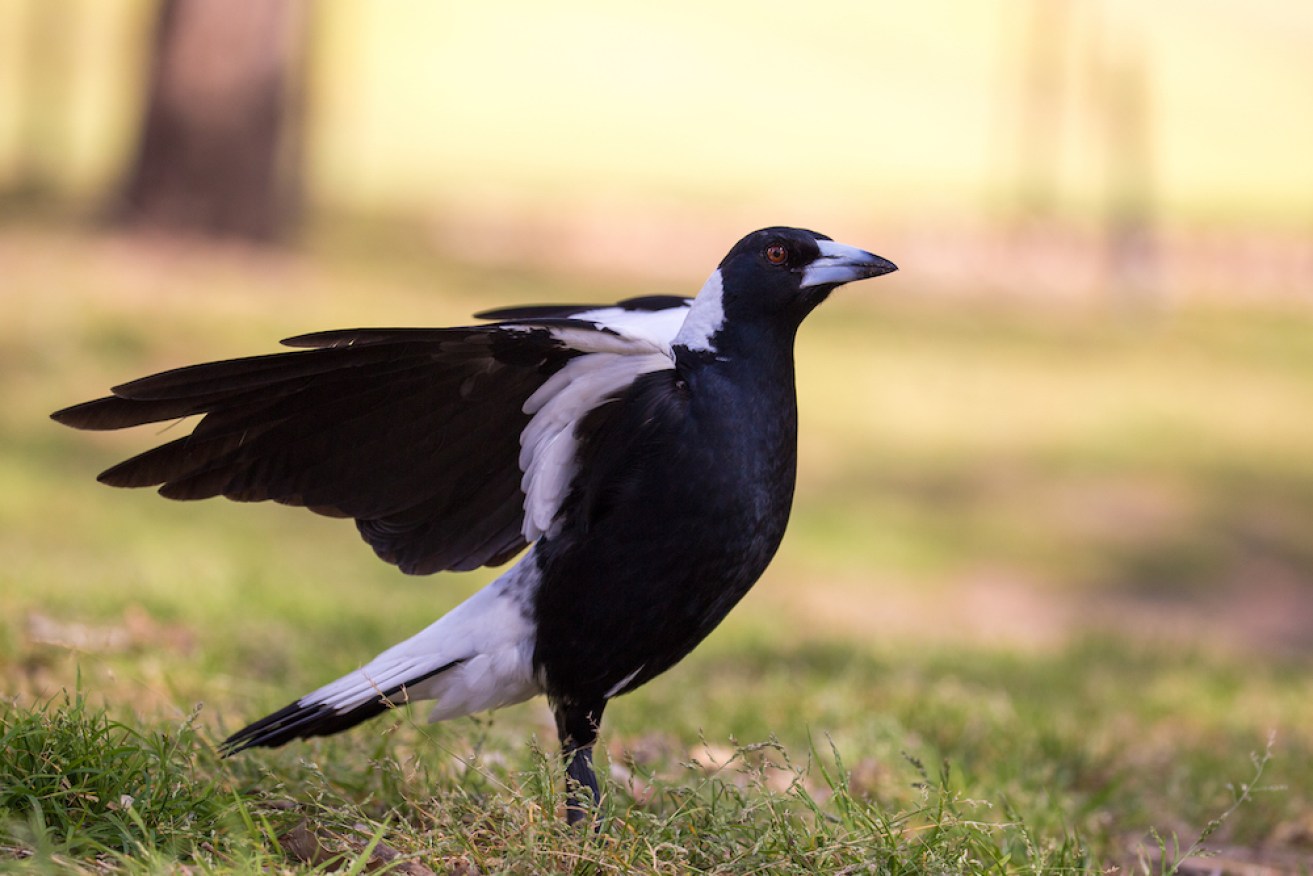How to survive swooping season


Swooping season is upon us. Photo: Getty
Australia is in the middle of the swooping season, so it’s time to protect your head from any aggressive birds.
Of course, the magpie is Australia’s most notorious swooper, but other birds are known to attack too.
According to Magpie Alert – a site where people can log swooping incidents – there have been 650 swooping attacks this year, with 67 resulting in injury.
Swooping season generally starts in August and wraps up in October, so with a few weeks left, there are some things to know in order to protect yourself.
Why do birds swoop?
Birds aren’t swooping at people because they simply hate people, or wish them ill will. They are just being defensive.
“Swooping behaviour is a part of the nest defence activity of magpies,” according to Dr Chaminda Ratnayake from the Research School of Biology at the Australian National University.
Not all magpies will swoop people passing their nest and generally, it’s the male magpies that do, as they protect their nestlings from any assumed predators.
Magpies will start getting defensive once the nest is built or when a female is ready to lay her eggs.

Magpies only swoop to protect their nests.
How to avoid getting swooped
The best thing anyone can do to prevent being swooped is to stay away from known nesting areas.
According to the South Australian government’s Department for Environment and Water, magpies only swoop within 100 metres of their nest. This is why Magpie Alert’s reporting page and map is important.
Sometimes you simply cannot avoid walking or cycling past a bird’s nest, so use accessories when out.
If you’re in need of a way to justify buying a new pair of sunglasses or hat, you’re in luck.
Experts suggest wearing hats and sunglasses to protect your head and face, which minimises the risk of injury. Plus, it’s just the sun-smart thing to do. Carrying an umbrella can also be useful to prevent swooping attacks.
Although it might be tempting to flee when a bird has made you their target, it’s best to keep calm and resist the urge.
“Running or cycling away is not a good idea,” Dr Ratnayake said.
“Most recorded injuries occur when people try to avoid being attacked – especially when cycling.”
If a bird does hone in on you, bend your elbow and lift your forearm over your head to shield your face, then look down and walk away calmly.
Cyclists should not keep riding to get away from the nest, instead, it’s advised they dismount and proceed on foot.
According to Karl Vernes, professor of wildlife ecology and conservation biology at University of New England, if a bird is not actively swooping, it could be best to maintain eye contact.
“Just maintain eye contact with the bird, and if it does swoop you when you’re looking at it, which can happen, but it’s much rarer, just throwing your arms up in the air as the bird’s in mid-flight is enough to disturb it and frighten it back to a tree,” he said.
Acting aggressively to counter attack is not advised.
“If you wave your arms about or shout, the magpies will see you as a threat to the nest – and not just this year, but for up to five years to come,” SA’s Environment Department said.
This is because magpies do remember people and will hold grudges.
“Magpies can recognise individual faces,” Dr Ratnayake said.
“Once they identify a single person as a threat, there may be a tendency to swoop or attack them during the breeding season close to the nesting area.”
Tweet from @7NewsAdelaide
Cyclists beware
Magpie Alert also analyses the statistics of swooping events and cyclists do have to be extra wary.
According to the data from 2023 so far, 75.4 per cent of people were cycling at the time of a magpie swooping incident.
In addition to the 491 people who were swooped on a bike, 102 people (15.7 per cent) were swooped while walking and 26 people (4 per cent) were attacked while running.
Sometimes people will add cable ties to helmets to prevent being swooped, however, in a piece for The Conversation, behavioural ecologist Bill Bateman said this likely doesn’t do much.
“Sadly it seems that the classic tactic of attaching cable ties to your helmet does little to deter a determined magpie, beyond the fact that some strategic placing can help keep them away from your ears,” he wrote.
“Ditto the idea of painting eyes on the back of your helmet or hat.”







